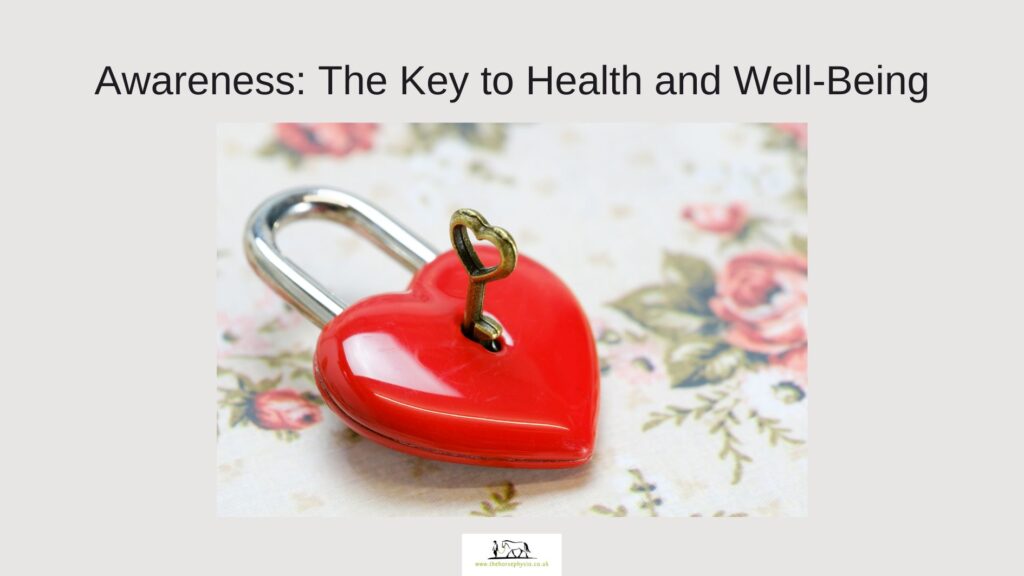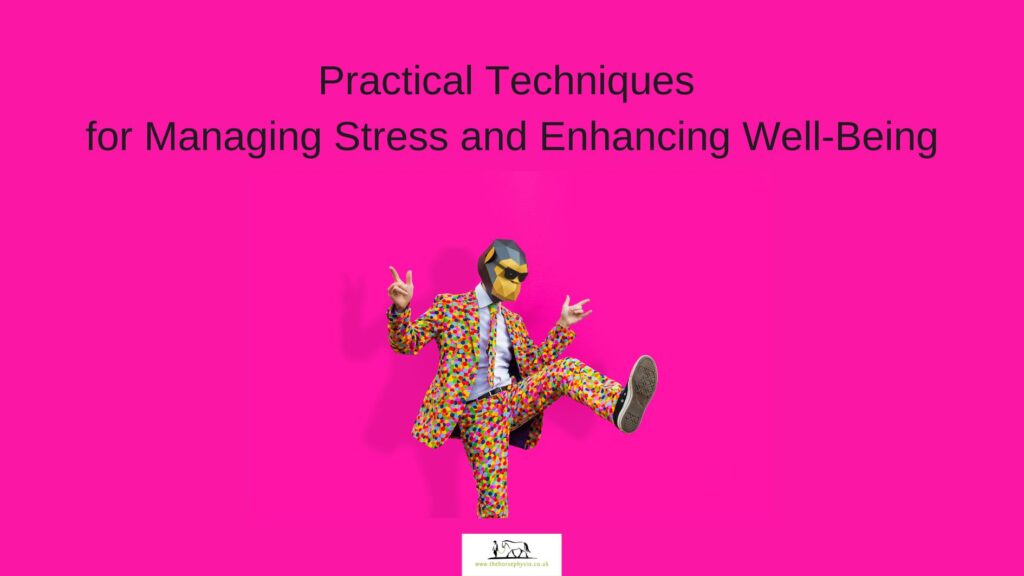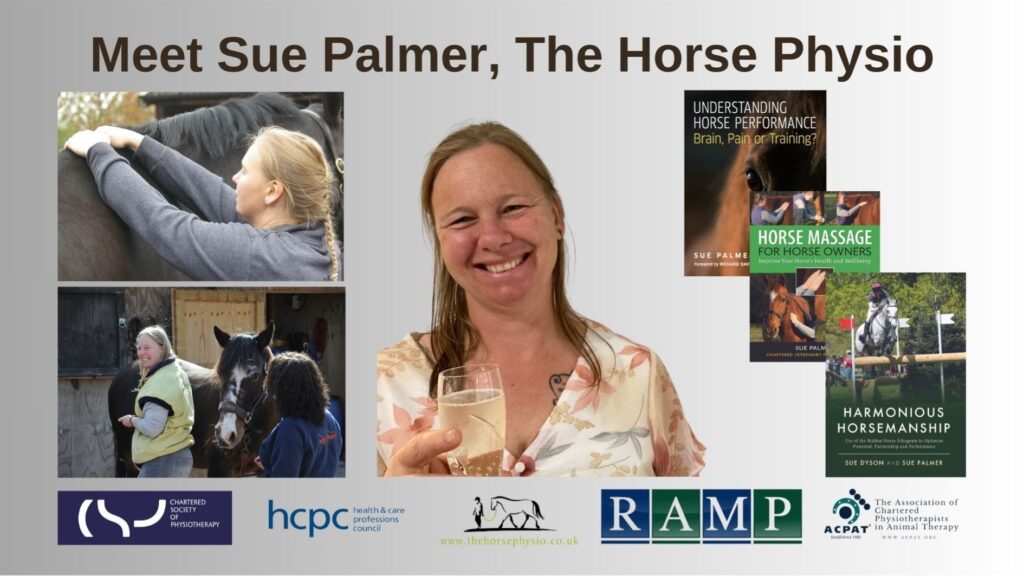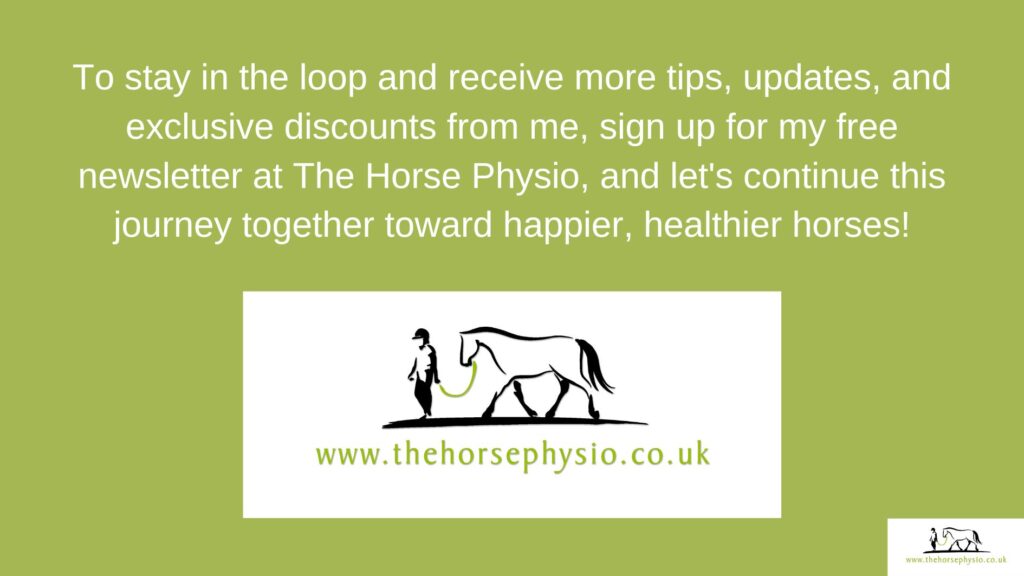Understanding how stress, emotions, and mindset influence overall well-being
Prefer to watch or listen? Click on the video above. If you enjoy reading, keep scrolling. You can support my work by buying me a coffee, joining the Healthy Humans, Happy Horses online community, or signing up to my newsletter. Remember to follow, like, and share on Facebook, Instagram and YouTube. Please note that this may contain affiliate links. Thank you – your support means so much!
Introduction
Good health and well-being begin with awareness – a deep and compassionate understanding of what’s going on within us, both mentally and physically. Our thoughts, emotions, and actions have a profound effect on our physical health, and what’s happening in our bodies influences how we think, feel, and act. By cultivating awareness, we can better navigate the intricate relationship between mind and body. This awareness empowers us to make intentional changes, allowing us to live a life that aligns with our true well-being. Understanding the mind-body connection is essential to achieving a balanced and fulfilling life.

Awareness: The Key to Health and Well-Being
The journey towards better health begins with self-awareness. Only when we recognise the interplay between our mental, emotional, and physical states can we begin to make meaningful changes. This awareness allows us to understand what might be triggering us or impacting our health, and it gives us the opportunity to explore whether we need to adjust something within ourselves or simply accept what is. Self-awareness becomes a tool for greater well-being, helping us to become the person we want to be and live the life we desire.
In my own life, I’ve been drawn to understanding the differences between emotions and feelings. A theme that emerged in my counseling was that I needed to focus more on feeling rather than overthinking. For someone like me, who enjoys deep understanding, it was a paradoxical notion. However, over time, I’ve come to realise that emotions are not solely mental experiences—they are felt in the body as well. There’s a reciprocal relationship between how we think, feel, and act, and this connection plays out in both emotional responses and physical sensations.
You can support my work by buying me a coffee, joining the Healthy Humans, Happy Horses online community, or signing up to my newsletter. Remember to follow, like, and share on Facebook, Instagram and YouTube.
The Dynamic Relationship Between Mind and Body
The mind-body connection operates through both a “bottom-up” and a “top-down” process. In a bottom-up approach, our physical sensations, such as an increased heart rate or muscle tension, can trigger emotional responses like fear or anxiety. On the other hand, a top-down process involves our emotions affecting our physical state. For example, when we are stressed, our bodies may react with physical symptoms such as headaches or muscle tightness. This interplay is influenced not just by the stimuli themselves but by the environment in which they occur.
For instance, if we hear a loud noise, we might feel fear. That fear is accompanied by physical changes, such as a rapid heart rate or tense muscles. However, our emotional response to the same noise may differ depending on our environment. If we’re at home, relaxed and safe, we might experience a mild reaction. But if we’re in an isolated, dark location, the fear may be amplified, and the physical response may be more intense. This illustrates the importance of understanding how both emotional and physical responses are context-dependent.
Research into the mind-body connection is growing, and studies show that emotions influence brain activity, bodily functions, and behavior. By exploring the top-down and bottom-up mechanisms at play, we can gain valuable insights into how to manage emotional regulation. Techniques such as relaxation exercises have been proven to reduce stress and anxiety. One particularly interesting area of study is heart rate variability (HRV) biofeedback, which has shown promising results in managing anxiety. A 2017 meta-analysis found that HRV biofeedback improved self-reported stress and anxiety, highlighting the potential of this technique in managing mental health.

Practical Techniques for Managing Stress and Enhancing Well-Being
In my own experience, HRV biofeedback has been a valuable tool in managing stress and improving overall well-being. After discussing my moderately high blood pressure with my GP, I began using the HeartMath Inner Balance app to monitor my HRV. This technique provides real-time feedback on how my mind influences my body. I’ve discovered that even the slightest shift in my mental focus—such as moving from a calm state to one of overthinking—can affect my heart rate. It’s also been enlightening to see how factors like poor sleep or a rich meal can influence my physical state. What’s empowering about this practice is that I can adjust my mindset, using relaxation techniques, and see the immediate impact on my HRV readings.
Another powerful technique for managing the mind-body connection is physical exercise. Exercise has been shown to improve mental health, particularly in reducing symptoms of depression and anxiety. I’ve personally found that walking in nature works wonders for my emotional state. The combination of physical movement and the calming environment of nature creates a shift in my brain activity, helping me to feel more centered and at peace. The key to benefiting from exercise is finding the type that brings you joy, whether it’s yoga, running, swimming, or dancing.
One of my favorite experiences was during an online group exercise session when we were invited to choose a movement for the group. I picked dancing, and although we couldn’t see each other, we danced freely in whatever form we chose. By the end of the session, everyone was smiling, and many people commented that it had been their favorite part of the course. The act of dancing had a powerful effect on our emotional state, demonstrating how physical movement can uplift both the mind and body.
Conclusion
The mind-body connection is a dynamic, ever-present force that shapes our health and well-being. When we become aware of the intricate relationship between our thoughts, emotions, and physical sensations, we gain the power to improve both our mental and physical states. By exploring practices such as HRV biofeedback, relaxation techniques, and exercise, we can better regulate our emotions, reduce stress, and create a healthier, more balanced life. The mind and body are not separate entities; they work in harmony to create the life we experience. When we nurture both, we empower ourselves to live with more joy, peace, and fulfillment.

🌟 About Sue Palmer
Sue Palmer MCSP, The Horse Physio, is an award-winning author, educator, and Chartered Physiotherapist. Sue specialises in both human health and equine well-being, with a focus on:
Her goal is to enhance performance and ensure a healthier, more comfortable life for both horses and their guardians. Sue is registered with:
✔️ RAMP
✔️ ACPAT
✔️ IHA
✔️ CSP
✔️ HCPC
🤝 Support My Work
☕ Buy Me a Coffee – Your support fuels my mission!
🌐 Join My Online Community – Connect with like-minded horse lovers.
📩 Sign Up for My Free Newsletter – Get exclusive insights and updates.
📚 Books by Sue Palmer
🎓 Online Courses from The Horse Physio
🌍 Find The Horse Physio
🌐 Website
📱 Facebook
📸 Instagram
🎥 YouTube
